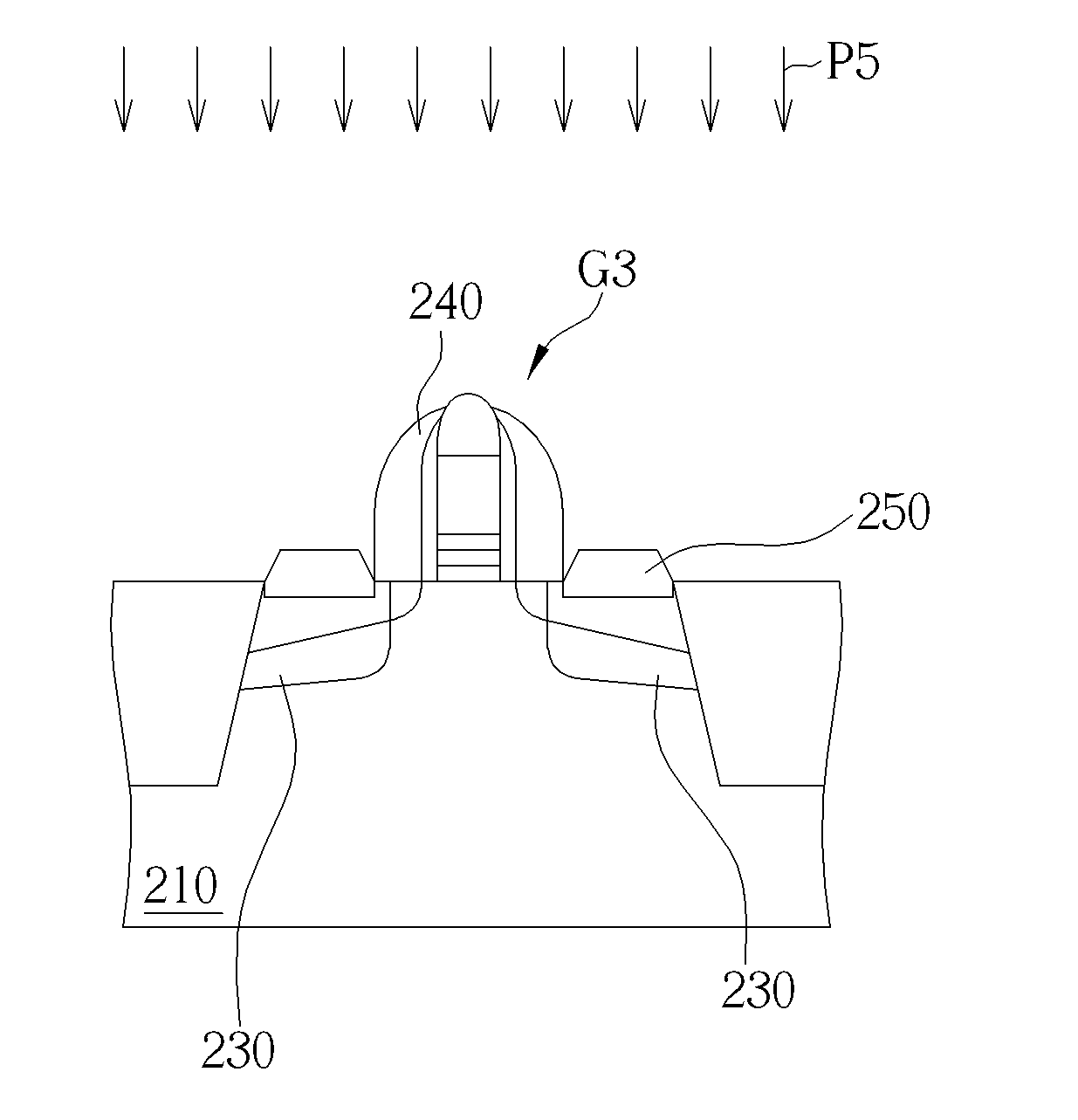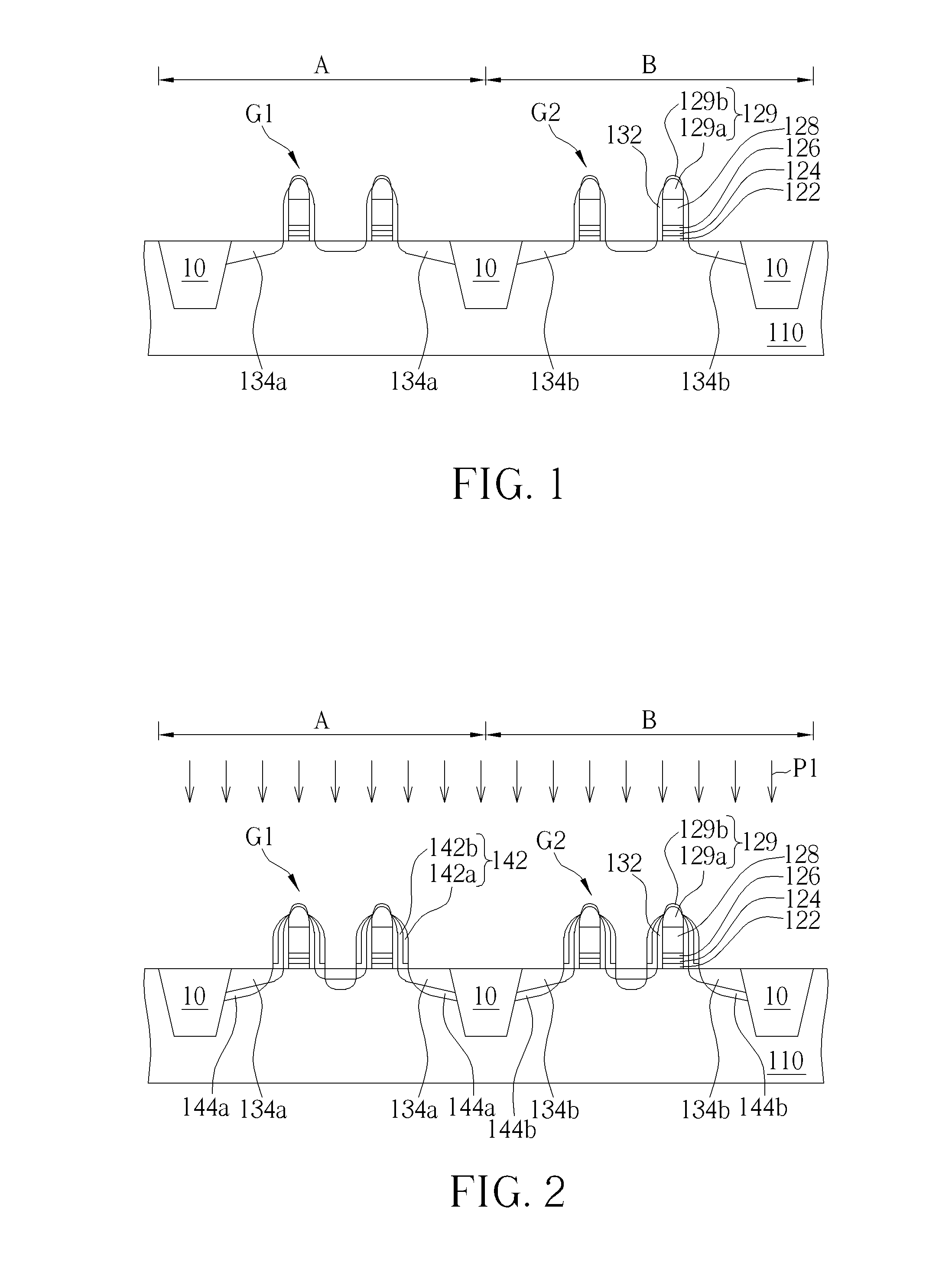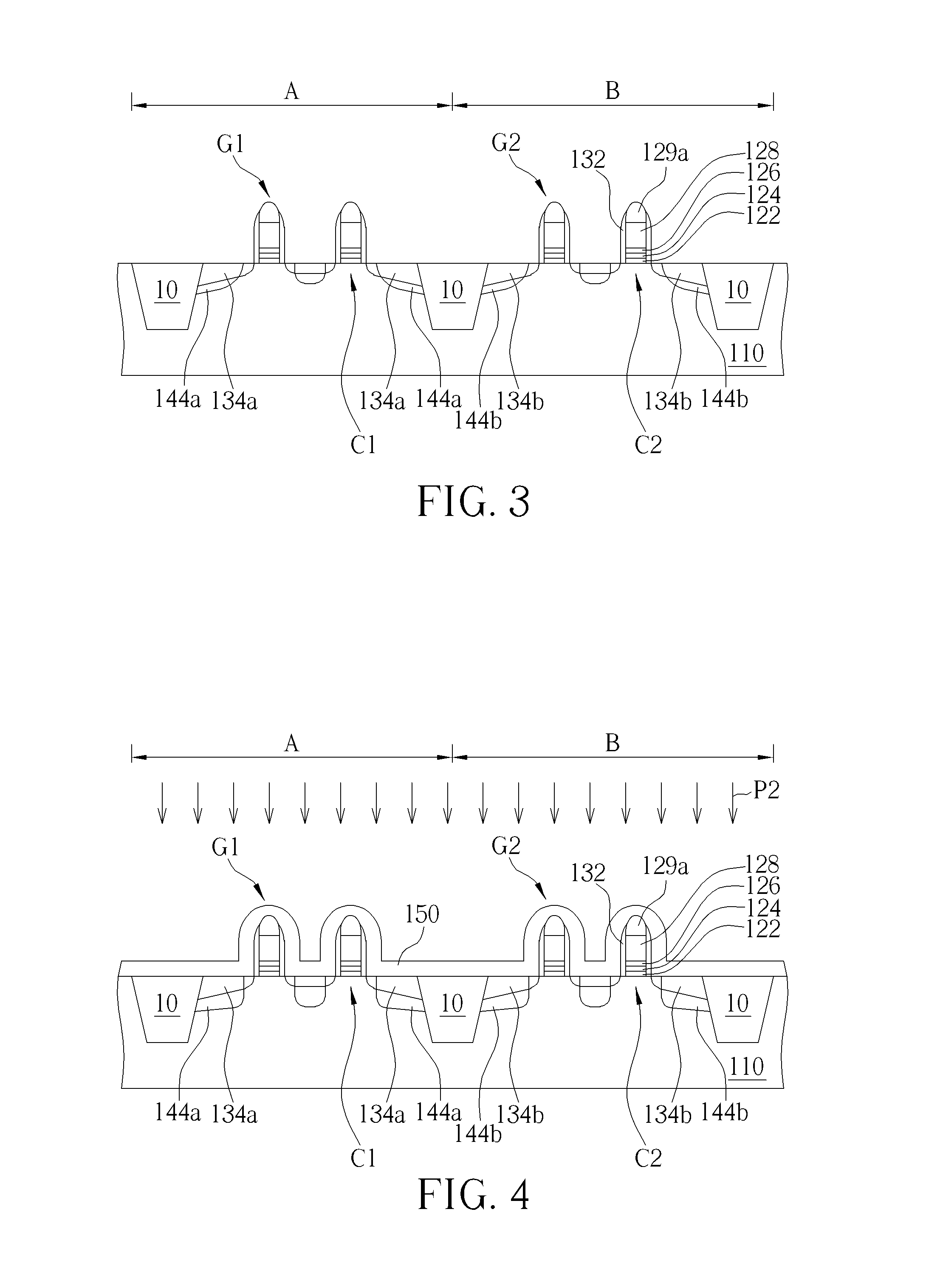Semiconductor process
a technology of semiconductors and processes, applied in the field of semiconductors, can solve the problems of reducing the epitaxial layer forcing stress effect and how to increase the driving current of mos transistors, and achieve the effect of reducing the epitaxial layer doped concentration and reducing the forcing stress
- Summary
- Abstract
- Description
- Claims
- Application Information
AI Technical Summary
Benefits of technology
Problems solved by technology
Method used
Image
Examples
Embodiment Construction
[0015]FIGS. 1-8 schematically depict cross-sectional views of a semiconductor process according to an embodiment of the present invention. As shown in FIG. 1, a substrate 110 is provided. The substrate 110 may be a semiconductor substrate such as a silicon substrate, a silicon containing substrate, a III-V group-on-silicon (such as GaN-on-silicon) substrate, a graphene-on-silicon substrate or a silicon-on-insulator (SOI) substrate. Isolation structures 10 are formed in the substrate 110. The isolation structures 10 may be shallow trench isolation (STI) structures, formed through a shallow trench isolation (STI) process, but it is not limited thereto. The details of the shallow trench isolation (STI) process are known in the art, and will therefore not be described herein. In this embodiment, the substrate 110 is divided into a first area A and a second area B by the isolation structures 10, wherein the first area A is used to form a PMOS transistor area, while the second area B is u...
PUM
 Login to View More
Login to View More Abstract
Description
Claims
Application Information
 Login to View More
Login to View More - R&D
- Intellectual Property
- Life Sciences
- Materials
- Tech Scout
- Unparalleled Data Quality
- Higher Quality Content
- 60% Fewer Hallucinations
Browse by: Latest US Patents, China's latest patents, Technical Efficacy Thesaurus, Application Domain, Technology Topic, Popular Technical Reports.
© 2025 PatSnap. All rights reserved.Legal|Privacy policy|Modern Slavery Act Transparency Statement|Sitemap|About US| Contact US: help@patsnap.com



